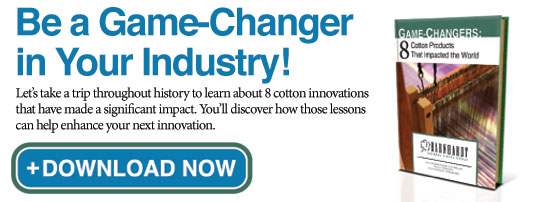When it comes to the most innovative products, most companies will readily admit that without strong partnerships, their products never would have made it to market. The right consultant, manufacturer, or marketer can sometimes make or break an enterprise. An inventive consultant can provide pre-launch expertise, a sharp manufacturer can shave time off production, and a savvy marketer can make sure the right messaging falls on the right ears.
Finding the perfect partner, in six simple steps
Like with any endeavor, laying the proper groundwork will ensure partnership success. In many ways, unearthing the right partner is much akin to interviewing for a new position within your company; you have a definitive need, and you want to hire the best person possible to fulfill that need. While some of the steps below will seem obvious, you’d be surprised how many companies skip them in an effort to move as quickly as possible. Unfortunately, finding the perfect partner takes patience, and strategy.
1. Set a clear objective
A clear objective not only serves as a compass for your search, but it also gives you a clear reference point throughout the process. The key with this step is not biting off more than you can chew. While you might have multiple needs, continue to sheer away until you’ve reached that core need. This ensures you’ll start your search off right. That means looking for a specialist—the best of the best in your industry—and not a jack-of-all-trades.
2. Determine the type of partner you need
If you’ve set a clear objective, then determining the type of partner of you need should be much easier. However, not all partners are created equally. Do you need a consultant that has expertise with products, or with services? Do you need a manufacturer that has the most streamlined production line, or one with an in-house product design team? Do you need a marketer that uses traditional methods, or one that focuses on inbound marketing? When you think you know the type of partner you need, it’s probably a signal that you need to keep whittling away.
3. Determine a realistic budget
Setting a budget can be sobering. While it’s far more enjoyable to dream about your cutting-edge product, the practice of setting a budget forces you to face the hard financial facts about what you can afford to launch and produce your latest innovation. A budget does more than just set a baseline; it saves you time in the end since you can be realistic about the partners you seek out. If you’re lucky enough to have an unlimited budget, shoot for the moon. But being honest with yourself—and about your economic resources—will save you serious heartache. There’s nothing worse than falling in love with a partner you can’t afford.
4. Research past and current innovative products
Whether it’s a short product description or a lengthy case study of products past and present, your research should serve to find the common denominators that made those market entries successful. This will not only serve as a way to strengthen what you discovered in step #2—whether you need a consultant, a manufacturer, a marketer, or a combination of the three—but now you’ll start identifying specific partners behind these success stories. This is where your list truly starts to take shape.
5. Consult with industry peers
As with individuals, it’s no different with companies big and small: warm referrals go a long way toward pairing up the perfect partners. There’s only so much research you can do, and it’s important to keep in mind that the partners you’re targeting probably have strong marketing efforts, too. By consulting with peers that have used these partners before, you’ll get the straight scoop, without any spin.
6. Evaluate prospects thoroughly
Once you’ve built out your vetted list, the only thing left to do is to run your prospects through the ringer. This goes beyond meetings and interviews. For manufacturers, ask to visit their plants. For marketers, demand to see examples of comprehensive campaigns. The more time you spend with your prospective partners, the more nuances you’ll learn. You’re already there because you trust in their capabilities. But never underestimate how important the personality match is, too. If your company cultures clash, even a match that seems made in heaven will be doomed.
The best innovations come from collaboration
While some of these steps will certainly take time and care, the reward for a more methodical approach is a partnership that can last for years. The best partnerships occur when companies can combine to streamline processes, negate weaknesses, and increase sales. By taking a gradual path to finding the perfect partner, your latest innovation has a far greater chance at success. And with the right partner, another one’s probably right around the corner.
Want to see how partnering with a manufacturer can lead to innovative nonwoven products? Download “Game Changers: 8 Cotton Products that Impacted the World.”

